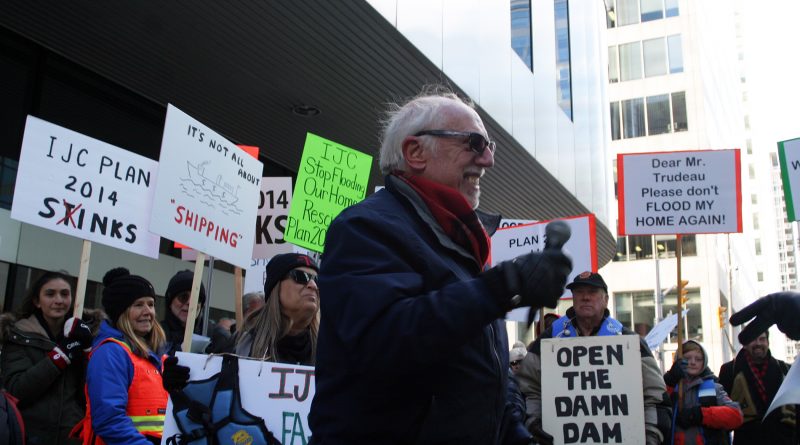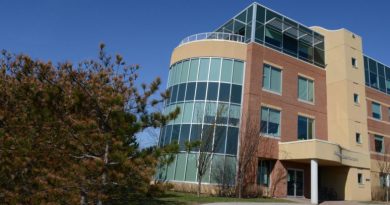OPG flood meeting same old speech
By Jake Davies - West Carleton Online
CONSTANCE BAY – Last Tuesday (Mach 24) Ontario Power Generation (OPG) went forward with its Telephone Town Hall, and despite the world’s attention on COVID-19, plenty of riverside residents made the call.
Despite the new technology for hosting the meeting, some who participated said it was the same old speech.
OPG planned the Telephone Town Hall a week before the national shutdown due to the fast spread of COVID-19 but was able to continue with the event as it followed physical distancing guidelines. The only difference, the OPG representatives also participated from separate locations.
OPG held two separate meetings that day, splitting the one-hour sessions up by upper and lower portions of the Ottawa River – the split being roughly the Whitewater Region near Beachburg.
OPG representatives said roughly 6,000 participated in the 6 p.m. town hall for the upper Ottawa River. The lower Ottawa River meeting started at 7:30 p.m. and West Carleton Online listened in.
The phone system worked flawlessly from West Carleton Online’s end. Voices were clear and easily understood. Meeting organizers did state the meeting would be recorded. For those who wanted to ask a question, they simply pressed Star 3 on the phone – we are unsure how that part of the system worked as we did not ask any.
The meeting was moderated by OPG’s director media, issues, information management’s Neal Kelly.
“I hope you find our call useful and helpful,” he told participants.
According to the man who asked the meeting’s first question, Constance Bay’s Gerry Blyth, it wasn’t.
“I was underwhelmed, to be honest with you,” Blyth told West Carleton Online Wednesday (March 25). “An hour wasn’t sufficient. Hydro-Québec not being there was a shame. As a result, we couldn’t get all the information we’d like. One question I would have asked them is why they have dramatically cinched up access to several of their websites’ important flow and level data sources? a shame, they’re not playing nice.”
If you have attended any other flood-related meeting in which the OPG was a participant, you have indeed heard the story.
OPG vice president of eastern operations Shaun Hinds gave a brief presentation on operations.
OPG produces half the power used in the province with 22 hydroelectric stations on six rivers with a total capacity of producing 4,700 megawatts. The region stretches from Trenton and Cornwall to Peterborough and Mattawa with 450 skilled staff. Ottawa River stations in the lower Ottawa River area include Mattawa, Swisha near Deep River, Chenaux in the Whitewater Region and Chats Falls in Fitzroy Harbour.
The Ottawa River basin is 146,000 square-kilometres and includes four of the six run-of-river stations and 13 reservoirs, six of which on the Ottawa River and some larger ones in Quebec. The run-of-the-river dams have minimal storage capacity and only 40 per cent of the basin is controlled.
“We know residents are impacted yearly,” Hinds said.
Over winter water is released from the reservoirs to create storage for snow melt and spring rain. That is slowly let out during the summer. In fall the reservoirs capture fall rains.
Jordan Hughes, OPG’s eastern Ontario water manager, was also part of the call and gave an update on conditions. He said things look good, the snowpack is leaving the system early and the early spring start helps. Levels are normal and below normal in some places. Hughes says while things look good, rain is the biggest factor in spring flooding and can’t be predicted at this time.
“We’re closely monitoring conditions daily,” Hughes said. “Basins are empty and ready to hold that spring runoff. It’s not possible to rule out flooding, but the current indicators look good. We’re not seeing water in the snow like we did in 2019. It’s very encouraging, but it is early.”
After presentations the OPG moderators took calls from the public.
As mentioned, the first one was from Blyth who wanted to know about Hydro-Québec’s request to divert water in to the Ottawa River to delay it hitting the Carillon Dam which he suggested contributed to 2017 flooding.
Hughes said 2017 were very “different circumstances” and the diversion was “not typical.”
In 2017 it was the lower watershed that suffered flooding because of rain while the upper watershed and basin were not flooded at the time. In 2019, everywhere was flooded so there was no benefit to divert water. Hughes said there is a 27-day time period before water arrives at the Carillon Dam from the upper Ottawa River.
A number of Constance Bay residents, some Arnprior and a couple of McNab-Braeside residents were able to get questions in during the brief period.
Hinds wanted to point out, we are living in unprecedented times.
“Several measures have been implemented for COVID-19 and let me stress we have not overlooked the fact we are heading in to the spring freshet season,” he said.
An Arnprior resident dose believe “climate change was a factor. Do we need more reservoirs?”
Hinds said, “it’s a good topic,” but “they wouldn’t have helped due to the 60 per cent uncontrolled flow.”
He also said there isn’t any real places to put a reservoir in the lower area of the river.
“The Pembroke area is already quite developed,” Hinds said. “It’s not practical or possible.”
Blyth, speaking with West Carleton Online well after the meeting, questioned the purpose of splitting the meeting in two. He felt, as one meeting more questions could have been asked, feeling many on both sides of the dividing line have similar questions and they wouldn’t have to be repeated in each session. Now he’s focused on his Constance Bay home.
“In my mind, I feel optimistic, but I’m going to still prepare,” Blyth said.











